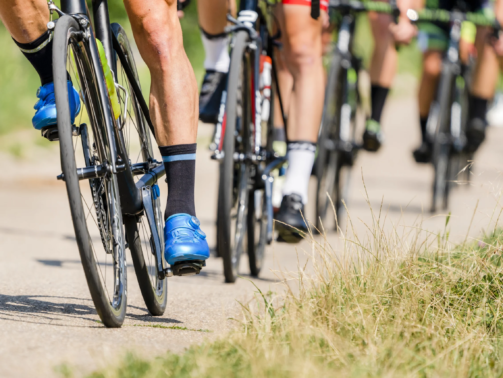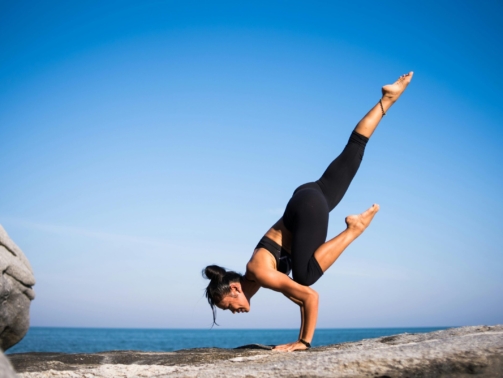Active Recovery
The Science of Everyday Nutrition: Walking, Superfruits, and Modern Food Questions Answered
In the ever-evolving landscape of health and nutrition, information is abundant—but clarity is ofte ...
Maximizing Cardio Recovery: How Active Recovery Can Supercharge Your Fitness
Whether you're a beginner in fitness or an experienced athlete, recovery is as vital as the workout ...
Active Recovery Yoga: Restore Your Body and Boost Performance Naturally
When it comes to improving athletic performance and preventing injuries, rest is just as important ...
Active Recovery Subcategory Overview: Optimizing Movement for Healing and Performance
Active recovery is a key strategy used by athletes, fitness enthusiasts, and physical therapists to promote healing, prevent injury, and improve performance. Unlike complete rest, active recovery involves low-intensity movements performed after intense training sessions or on designated rest days.
What Is Active Recovery?
Active recovery refers to performing gentle exercises or movements to stimulate circulation and support the body’s natural healing processes. People searching for what is active recovery or active recovery meaning are often looking to understand the balance between rest and movement. This approach reduces muscle soreness, improves flexibility, and speeds up overall recovery.
Common Active Recovery Workouts
Active recovery sessions focus on low-impact, full-body movement. Popular active recovery workout and full body active recovery workout routines may include:
Walking or light jogging
Cycling at a comfortable pace
Yoga or dynamic stretching
Swimming or aqua therapy
Bodyweight mobility exercises
Many fitness programs incorporate an active recovery day workout to ensure proper muscle repair without losing training momentum.
Examples of Active Recovery Exercises
Common exercises in active recovery include:
Arm circles and shoulder rolls
Leg swings and light squats
Foam rolling and self-massage
Cat-cow stretches and hip bridges
These movements are often performed slowly and mindfully to promote blood flow and decrease stiffness.
Benefits of Active Recovery
Those researching the benefits of active recovery are usually interested in maximizing training results while minimizing fatigue and injury. Key benefits include:
Faster muscle recovery
Reduced delayed onset muscle soreness (DOMS)
Increased circulation
Improved flexibility and joint health
Mental relaxation and reduced stress
By moving the body gently, muscles receive oxygen-rich blood that facilitates healing and flushes out metabolic waste from intense workouts.
Active Recovery vs Rest Day
Many people ask about active recovery vs rest day or is active recovery better than rest? The answer depends on individual fitness levels, training intensity, and recovery goals.
Active recovery keeps the body moving to aid circulation and healing.
Rest day involves minimal physical activity and full relaxation.
For most people, a combination of both is ideal—active recovery can be used after heavy lifting days, while complete rest may be needed after competition or during illness.
Shoes and Footwear for Active Recovery
Proper footwear supports comfort and function during light movement. Many users search for active recovery shoes or Kane active recovery footwear to find ergonomic options that reduce foot fatigue and support joint alignment.
Brands offering recovery-focused shoes often use materials that cushion impact, support arches, and allow natural foot movement. Footwear is particularly helpful for walking-based recovery routines or post-run cooldowns.
Best Active Recovery Ideas
People looking for active recovery ideas are typically trying to add variety and effectiveness to their routine. Options include:
Hiking at an easy pace
Pilates for flexibility
Low-impact circuit training
Dance-based movement sessions
Gentle foam rolling sessions
Whether it’s a full workout or a brief recovery day activity, the focus is on slow, controlled, and comfortable movement.
Active Recovery in Training Programs
Many structured fitness programs include active recovery days. These help balance physical strain and reduce the risk of overtraining. Fitness platforms, gyms, and personal trainers often prescribe best active recovery workouts for clients during deload weeks or after high-intensity intervals.
Active Recovery and Mental Health
Active recovery is not only beneficial physically—it supports emotional well-being as well. Gentle movement increases endorphin levels, improves mood, and reduces stress. A walk outdoors or a yoga flow session can help unwind the mind while supporting the body’s healing.
Pilates and Yoga as Active Recovery
For those asking is Pilates active recovery? the answer is yes—when performed at a light intensity. Both Pilates and yoga help lengthen muscles, improve posture, and develop core strength without overstressing the body.
These practices are especially helpful for individuals recovering from intense training, long work weeks, or muscle tightness.
Active Recovery Essentials and Gear
Those interested in active recovery essentials often invest in tools and equipment that enhance their routines. Useful items include:
Resistance bands for mobility
Foam rollers and massage balls
Comfortable activewear
Low-impact shoes
Yoga mats
This gear supports comfort and effectiveness in recovery-focused workouts.
Active Recovery Day Planning
A successful active recovery day includes light movement, hydration, nutrient-dense meals, and sufficient sleep. It’s not about burning calories, but instead about giving the body a chance to restore function and energy.
Sample active recovery schedule:
Morning: 20–30 min walk or yoga flow
Midday: Stretch break, light mobility work
Evening: Foam rolling and calming breathwork
Recovery is personal—some may prefer an active recovery workout CrossFit style (intense but light), while others benefit more from restorative movement.
Active Recovery and Performance
Incorporating regular recovery days improves long-term athletic performance. Training without adequate recovery leads to fatigue, reduced gains, and greater risk of injury. Active recovery supports consistent progress by allowing the body to reset while staying in motion.
Conclusion
Active recovery is a smart and sustainable approach to rest. Whether you’re a high-level athlete or someone starting a new fitness journey, using low-intensity movement to boost circulation, flexibility, and healing can make a meaningful difference.
Popular topics like active recovery exercises, benefits of active recovery, and what does active recovery mean reflect a growing interest in wellness-based training methods. As more people embrace holistic recovery, active recovery will remain a valuable part of every balanced fitness routine.



